|
Here are all the paintings of WITZ, Konrad 01
| ID |
Painting |
Oil Pantings, Sorted from A to Z |
Painting Description |
| 9750 |
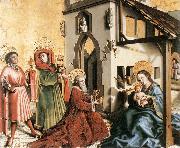 |
Adoration of the Magi hfy |
1443-44
Panel, 132 x 151 cm
Mus??e d'Art et d'Histoire, Geneva |
| 9743 |
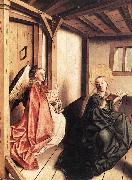 |
Annunciation r |
c. 1440
Panel, 158 x 121 cm
Germanisches Nationalmuseum, Nuremberg |
| 9745 |
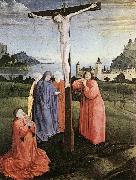 |
Christ on the Cross wr |
1430-33
Panel, 34 x 26 cm
Staatliche Museen, Berlin |
| 9748 |
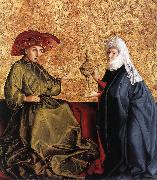 |
King Solomon and the Queen of Sheba qr |
1435
Panel, 84 x 79 cm
Staatliche Museen, Berlin |
| 31731 |
 |
Pieta |
mk76
Date unknown
Tempera on panel
13 1/8x17 1/2in
|
| 38149 |
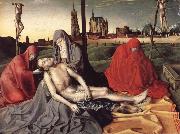 |
Pieta,Fifteenth century |
mk131
Tempera and oil on panel
33.3x44.4cm
|
| 9751 |
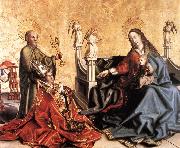 |
Presentation of Cardinal de Mies to the Virgin r |
1443-44
Panel, 132 x 154 cm
Mus??e d'Art et d'Histoire, Geneva |
| 33448 |
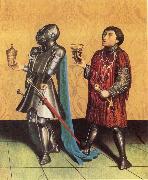 |
Sabobai and Benaiah |
mk86
c.1435
Tempera on wood
102x78cm
|
| 21270 |
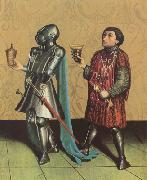 |
Sabobai and Benaiah (mk08) |
C.1435
Tempera on wood
102x78cm
Basle,Offentliche
Kunstsammlung Basel,
Kunstmuseum |
| 9746 |
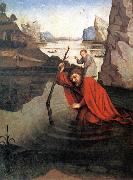 |
Saint Christopher qr |
c. 1435
Panel, 101 x 81 cm
Öffentliche Kunstsammlung, Basle |
| 9744 |
 |
St Bartholomew wr |
c. 1435
Wood, 100 x 68 cm
Öffentliche Kunstsammlung, Basle |
| 43885 |
 |
The Death of Mary |
c. 1420 Panel,
141 x 110 cm
|
| 9749 |
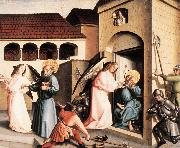 |
The Liberation of St Peter jgu |
1443-44
Panel, 132 x 154 cm
Mus??e d'Art et d'Histoire, Geneva
|
| 33449 |
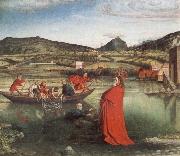 |
The Miraculous Draught of Fishes |
mk86
1444
Tempera on wood
132x154cm
Geneva.
|
| 40191 |
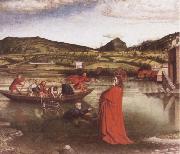 |
The Miraculous Draught of Fishes |
mk156
1444
Oil on panel
129x155cm
|
| 21271 |
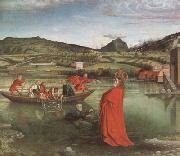 |
The Miraculous Draught of Fishes (mk08) |
14444
Tempera on wood
132x154cm
Geneva,Musee d'Art et d'Histoire |
| 9747 |
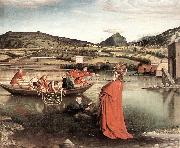 |
The Miraculous Draught of Fishes wr |
1443-44
Tempera on wood, 132 x 151 cm
Mus??e d'Art et d'Histoire, Geneva |
| 9752 |
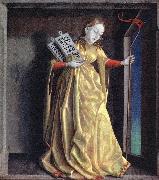 |
The Synagoge jrt |
c. 1435
Wood, 86 x 80,5 cm
Öffentliche Kunstsammlung, Basle |
|
|
| WITZ, Konrad
|
| b. cca 1400, Rottweil, d. ca. 1445, Basel. German-born painter from Rottweil in Swabia, active in Switzerland. German painter. One of the great innovators in northern European painting, he turned away from the lyricism of the preceding generation of German painters. His sturdy, monumental figures give a strong impression of their physical presence, gestures are dignified and the colours strong and simple. Even scenes with several figures are strangely undramatic and static. The surface appearance of materials, especially metals and stone, is intensely observed and recorded with an almost naive precision. Powerful cast shadows help to define the spatial relationships between objects. His fresh approach to the natural world reflects that of the Netherlandish painters: the Master of Fl?malle and the van Eycks. He need not, however, have trained in the Netherlands or in Burgundy as knowledge of their style could have been gained in Basle. He remained, however, untouched by the anecdotal quality present in their art,
|
|

